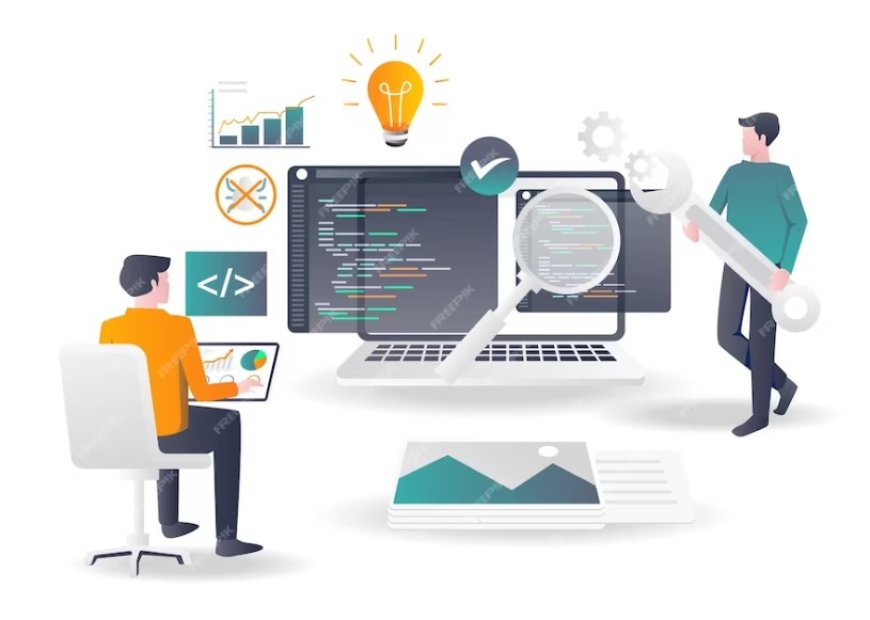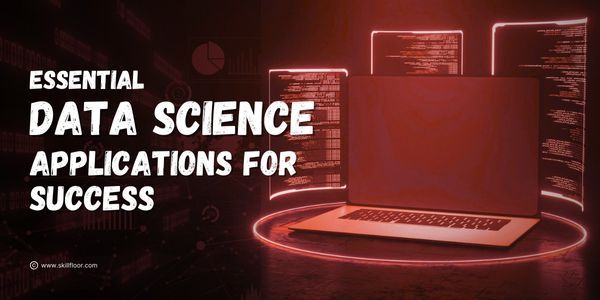Data Science and Its Connection to Python Programming
Learn the essential skills and techniques necessary to be successful in data science using Python.

Data science is all about making sense of the massive amounts of data we have today. It's become super important in many industries because it helps them make better decisions. Python, a popular programming language, plays a key role in data science. It's known for being versatile and widely used.
Data science is like a detective for data, helping us understand trends, make predictions, and find insights. Imagine businesses using it to figure out what products customers might want next. Or doctors using it to improve healthcare by analyzing patient data. That's why data science is in demand everywhere.
Python is the tool of choice for many data scientists because it has special libraries and tools made just for data analysis. These tools make working with data easier, like organizing it or making cool charts. Plus, Python is used in machine learning and AI, making it a must-learn for those interested in these fields.
So, data science and Python are a powerful duo. If you want to dig into data, Python is a great starting point because it's friendly and helps you unlock the secrets hidden in the numbers. That's why many folks are excited about learning data science with Python!
The Complexity of Data Analysis
Data analysis can get pretty tricky, and there are two big reasons why. First, we're generating tons of data every day. Think about all the social media posts, online shopping, and more. There's just so much info to sort through! Second, making sense of all that data is like finding a needle in a haystack. You need the right tools to do it effectively.
Let's talk about the vast amounts of data first. Everything we do online, from posting pictures to buying stuff, creates data. It piles up fast, and it's often messy. That's why we need smart ways to handle it.
The real challenge is making sense of it all. What can we learn from this mountain of information? For example, businesses want to know what products to make next, and doctors want to find patterns in patient data to improve care. It's like looking for a gem in a treasure chest.
This is where data science comes in, and it's closely tied to programming, especially with a language like Python. Programming helps us write instructions for computers to process and analyze data. It's like having a helper that goes through the haystack and finds the needle for us. Python has special tools, called libraries, that make working with data easier. It's the detective's magnifying glass, making hidden insights visible.
So, while the data overload and complexity can be a challenge, the right tools and programming languages like Python help us sift through the data treasure trove and discover valuable insights. It's like having a map and a flashlight in a dark cave of data, guiding us to what we're looking for. This is why data science and Python go hand in hand, helping us make sense of the data-driven world around us.
How Does Python Relate to Data Science?
Python is like the wizard's wand in the world of data science. It's a versatile and user-friendly programming language that plays a significant role in this field. Data science is all about turning data into insights, predictions, and decisions, and Python is the tool that makes this magic happen.
One of the main reasons Python is beloved by data scientists is its extensive collection of libraries and frameworks tailored for data analysis. These libraries, like NumPy, Pandas, and Matplotlib, act like a magic potion. NumPy helps with numerical operations, Pandas organizes data in a snap, and Matplotlib creates stunning visualizations. These tools save data scientists from the hassle of reinventing the wheel and let them focus on the real wizardry – extracting valuable information from data.
Python is also a favorite in the world of machine learning and artificial intelligence (AI). It's like a trusted partner for data scientists who want to create predictive models, identify patterns, or build intelligent systems. Libraries like scikit-learn and TensorFlow provide the spells and charms needed for these tasks. Python's simplicity and readability make it easy for data scientists to translate their ideas into working code, experimenting with algorithms and making sense of complex data.
So, Python's role in data science is that of an essential enabler. It's the language that makes data analysis accessible to a wide range of professionals. Whether you're a beginner or an experienced data scientist, Python is the key that unlocks the door to the captivating world of data insights.
Aspects of Data Science Can Be Performed with Python
Python is like a Swiss Army knife for data science. It's not just a one-trick pony; it can perform a wide array of tasks, making it a valuable companion for data scientists in their daily work.
Data Collection: Python helps collect data from various sources, whether it's scraping data from websites, pulling data from databases, or reading files in different formats. Its flexibility and powerful libraries simplify the process, ensuring data scientists have the information they need at their fingertips.
Data Cleaning: Data is often messy, like trying to untangle a knotted rope. Python helps in cleaning and preprocessing data, getting rid of missing values, handling outliers, and transforming data to a usable format. Libraries like Pandas offer tools that make this task more like solving a puzzle.
Data Analysis: This is where the real magic happens. Python's libraries allow data scientists to perform in-depth analysis, from basic statistics to advanced machine learning algorithms. You can uncover trends, patterns, and correlations in your data, helping you make informed decisions.
Data Visualization: Python is like an artist's palette when it comes to data visualization. Matplotlib and libraries like Seaborn or Plotly help you create stunning charts and graphs, making it easy to convey your findings to others. It's not just about numbers; it's about telling a story with data.
Machine Learning: Python is at the forefront of machine learning and AI. Libraries like scikit-learn and TensorFlow provide powerful tools for creating predictive models, training neural networks, and building intelligent systems. Python's simplicity makes it a great choice for experimenting and fine-tuning algorithms.
Data Workflow: Python is like a conductor guiding a symphony in your data science workflow. With packages like Jupyter Notebook, you can document your analysis step by step, making it easy to reproduce and share your work. It's a great way to collaborate with peers or present your findings to stakeholders.
Web Development: Python isn't limited to just data analysis. With frameworks like Django and Flask, you can build web applications that showcase your data or create interactive dashboards for visualizing insights.
Python's versatility extends to nearly every aspect of data science. It's a flexible and approachable language that empowers data scientists to tackle the full spectrum of tasks, from data collection to analysis and beyond. Whether you're a beginner learning the ropes or a seasoned pro, Python is your trusty sidekick in the world of data science, helping you turn raw data into valuable insights and predictions.
The relationship between data science and Python is like a harmonious partnership. Python serves as the go-to tool for data scientists, offering a wide range of libraries and capabilities to simplify complex tasks. Its importance in data science cannot be overstated, as it empowers professionals to analyze, visualize, and derive insights from data with ease.
For those looking to embark on a data science journey, Python is a must-learn language. Its simplicity and extensive community support make it an ideal starting point, whether you're a beginner or an experienced data scientist. Embracing Python opens doors to a world of data-driven discovery, making it a valuable skill for anyone interested in the exciting realm of data analysis and science. So, don't hesitate—dive into Python and unleash your data science potential!




























































